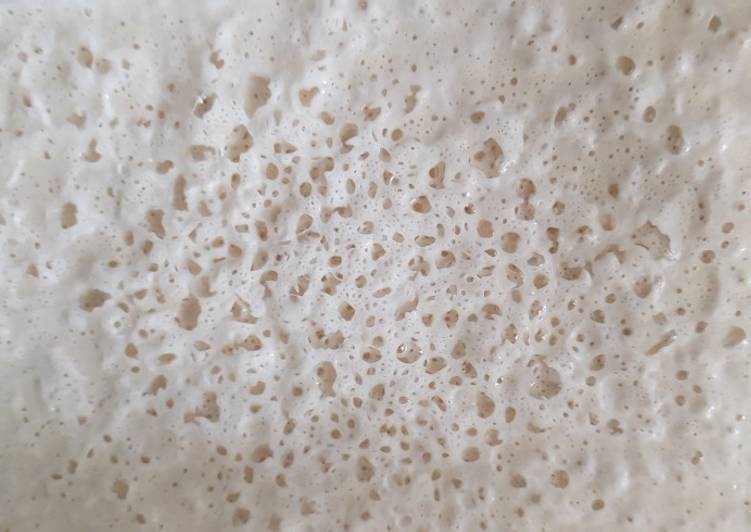Recipe: Delicious Sourdough starter
Sourdough starter. Sourdough baking is as much art as science. The method you'll read here for making sourdough starter isn't an exact match for the one you read on another site, or in a cookbook, or in your. How to make your own Sourdough Starter, using simple ingredients with no special equipment, in Sourdough Starter is often referred to as "wild" yeast, made from flour, water and the wild yeast in.
 Sourdough starter is what you use instead of commercial yeast to make sourdough bread rise. Some of the best sourdough starters have been specifically developed to provide predictable results. Learn how to make your own sourdough starter from scratch! You can have Sourdough starter using 6 ingredients and 11 steps. Here is how you cook that.
Sourdough starter is what you use instead of commercial yeast to make sourdough bread rise. Some of the best sourdough starters have been specifically developed to provide predictable results. Learn how to make your own sourdough starter from scratch! You can have Sourdough starter using 6 ingredients and 11 steps. Here is how you cook that.
Ingredients of Sourdough starter
- It's of 1 Day.
- It's 25 g of water.
- You need 25 g of plain flour.
- Prepare of 2 Day.
- Prepare 50 g of water.
- Prepare 50 g of plain flour.
We're mindful of how the current coronavirus outbreak might be affecting your access to stores. Making your own sourdough starter is easy and it's the first step in baking delicious artisan bread. Here is the Breadtopia video tutorial and recipe for creating your own wild yeast sourdough. A sourdough starter is essential for making sourdough bread.
Sourdough starter instructions
- Add flour and water to a suitable lidded container and stir until well combined..
- Pop the lid on and leave in a warm spot out of direct sunlight..
- Day 2, you will find the mixture is thickened and begins to show some small bubbles and separation. Simply add 50g flour and 50g water and stir into mixture. Pop lid back on and pop it back in the warm spot..
- Day 3 you may decide to remove a tablespoon or two from the mixture so you don't end up with too much. Once you gave done this put the discard aside and use it to make pancakes or in another recipe. Some people throw it away but I hate to waste!.
- Weigh the remaining sourdough starter. Whatever the weight you aim to double it by adding half the amount of water and half flour..
- Keep using the same type of flour. Don't for example start with plain flour then switch to wholemeal..
- Each day the starter will look a little unpleasant. It will begin to have a sour smell and when hungry will produce a watery yellowish substance called hooch. This can be carefully discarded before feeding with flour and water..
- If you want to keep track of activity, since it's best used when active to make bread, pop a post it on container to mark the top of the mixture. You can then easily see if it has grown in size..
- If you want to wait before the next feeding, for example if you run out of flour, just pop it in the fridge..
- Keep maintaining it this way and it will last a very long time. Just use what you need in the recipe. If however you notice any black spots, this is mould and you need to throw it away and start over. This hasn't happened to me so far..
- Some people like to name their pet yeast too lol..
Though you can order one online or find A sourdough starter, also called levain, is a fermented dough filled with natural, wild yeast. A sourdough starter is a symbiotic culture of bacteria and yeast (SCOBY) like kombucha, water kefir, and milk kefir. It's this combination of bacteria and yeast that helps flavor and make sourdough. Learn how to obtain an established sourdough starter or make one from scratch with our sourdough starter recipe. Simply put: a sourdough starter is a live culture of flour and water.